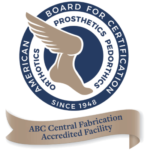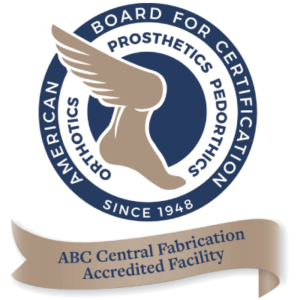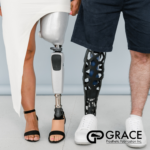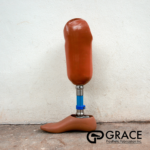What are some common balance issues related to lower limb amputation?
Patients living with a lower limb amputation present a unique set of challenges, particularly when it comes to balance and mobility. We understand the profound impact that balance issues can have on the daily lives of lower limb amputees. Prosthetic limbs play a crucial role in helping individuals regain stability and confidence. In this guide, we explore the common balance issues faced by lower limb amputees and how modern prosthetic limbs can help mitigate these challenges.
Understanding Balance Issues in Lower Limb Amputees
Balance is a complex function that involves the coordination of muscles, joints, and sensory information from the eyes, inner ears, and proprioceptive sensors in the skin and muscles. For lower limb amputees, the loss of a limb disrupts this intricate system, leading to various balance issues.
Common Balance Issues
- Postural Instability: The loss of a lower limb affects the body’s center of gravity, often leading to postural instability. Amputees may find it challenging to maintain an upright position, especially when standing still or performing activities that require a stable stance.
- Gait Asymmetry: Walking with a prosthetic limb can result in an uneven gait. The affected side might experience a different range of motion and force compared to the non-affected side, leading to asymmetrical movement patterns that can affect overall balance.
- Proprioceptive Deficit: Proprioception is the body’s ability to sense its position in space. Lower limb amputees often face a proprioceptive deficit because they lack sensory feedback from the missing limb, making it harder to detect changes in terrain or body position.
- Compensatory Strategies: To cope with balance issues, amputees might develop compensatory strategies such as leaning more heavily on the non-affected side or using assistive devices. While these strategies can provide temporary stability, they can also lead to long-term musculoskeletal problems.
The Role of Prosthetic Limbs in Addressing Balance Issues
Modern prosthetic limbs are designed to help lower limb amputees regain balance and improve their overall quality of life. Here’s how prosthetic technology can address balance issues:
Advanced Prosthetic Design
- Weight Distribution: Prosthetic limbs are designed to distribute weight evenly, helping to restore the body’s natural center of gravity. This balanced weight distribution is crucial for maintaining postural stability and reducing the risk of falls.
- Joint Articulation: Many prosthetic limbs feature advanced joint articulation that mimics the natural movement of the knee and ankle. These joints can adjust to different walking speeds and surfaces, providing a more stable and natural gait.
- Shock Absorption: Prosthetics with shock-absorbing features can reduce the impact on the residual limb and the non-affected side, leading to smoother and more comfortable movement. This can significantly enhance balance during activities that involve sudden changes in motion.
Enhancing Proprioception
- Sensory Feedback: Some prosthetic limbs are equipped with sensors that provide sensory feedback to the wearer. This feedback can help amputees better understand their limb’s position and movement, improving proprioception and balance.
- Adjustable Settings: Advanced prosthetics offer adjustable settings. These settings allow users to customize their prosthesis based on their activity level and the specific demands of different environments. This adaptability can enhance stability and confidence.
Rehabilitation and Training
- Physical Therapy: Working with a physical therapist who specializes in prosthetic training can be immensely beneficial. Therapists can help amputees develop strength, coordination, and balance through targeted exercises and training programs.
- Balance Training: Specific balance training exercises can help improve stability and confidence.
Contact Grace Prosthetic Fabrication for Custom Prosthetic Socket Manufacturing
Balance issues are a significant challenge for lower limb amputees, but modern prosthetic limbs offer effective solutions. Through advanced design, sensory feedback, and comprehensive rehabilitation programs, prosthetic technology can help amputees achieve greater stability and improve their overall quality of life.
At Grace Prosthetic Fabrication, we provide cutting-edge prosthetic sockets that address the unique needs of our clients, helping them overcome balance issues and lead active, fulfilling lives.






